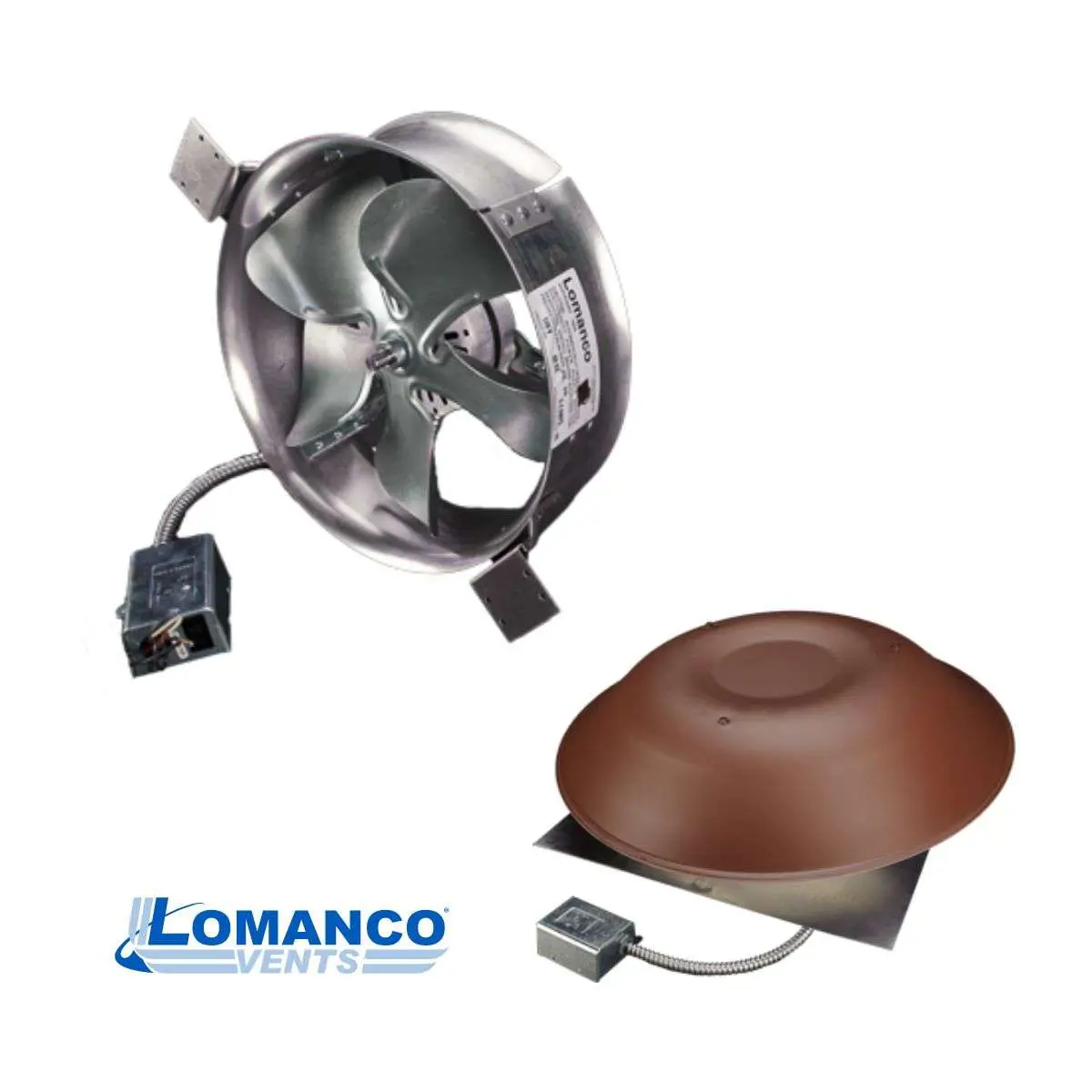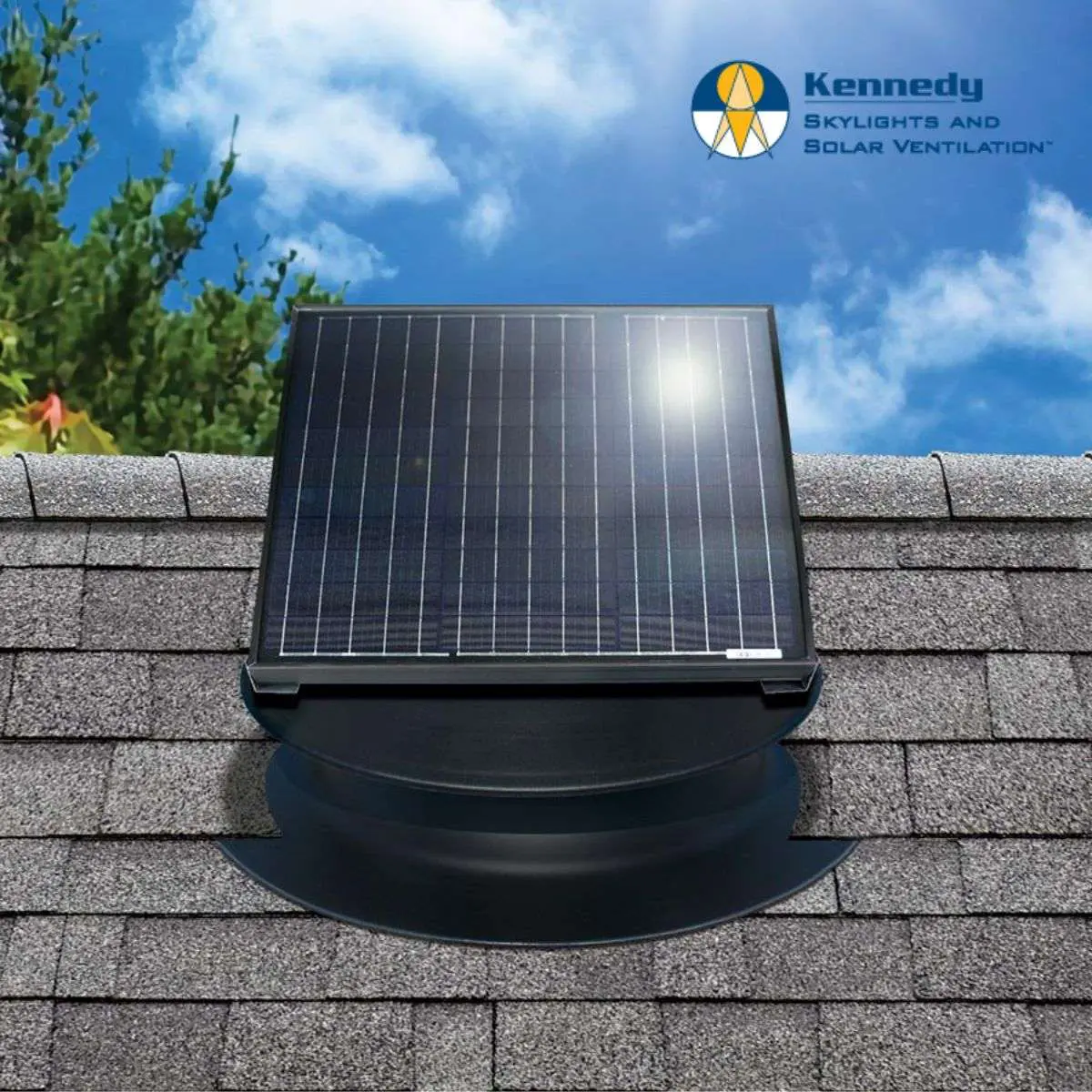Electric vs. Solar Roof-Mounted Attic Fans
In the quest for more energy-efficient homes, roof-mounted attic fans have emerged as a pivotal technology, significantly impacting cooling costs and enhancing living comfort. Predominantly, there are two types of attic fans based on their power source: electric and solar-powered. While both serve the principal function of ventilating the attic by expelling hot air, thereby reducing the load on air conditioning systems, they operate under different paradigms and offer unique benefits. Understanding the differences between these two can help homeowners make informed decisions that align with their energy goals, financial considerations, and environmental ethos.
Electric Powered Attic Fans:
These fans are wired directly into the home’s electrical system and are known for their robust performance. They can move a large volume of air in a relatively short time, making them highly effective in reducing attic temperature. Electric fans often come with thermostats and humidistats, allowing for automatic operation based on temperature and humidity levels, which enhances their efficiency. However, their operation increases the household’s electricity consumption, impacting utility bills, especially during peak summer months when their usage is most needed.
Benefits of Electric Powered Attic Fans:
- High performance with the ability to move large volumes of air.
- Automatic operation thanks to integrated thermostats and humidistats.
- Generally lower upfront cost compared to solar-powered models.
Con’s of Electric Powered Attic Fans:
- Increased electricity consumption, resulting in higher utility bills.
- Limited operation during a power outage.
- May require professional installation and wiring, adding to upfront costs.
Solar Powered Attic Fans:
As the name suggests, these fans operate on solar energy, utilizing photovoltaic panels to convert sunlight into electricity. They offer a green alternative, significantly reducing the carbon footprint of a household. Solar attic fans are particularly appealing in sunny locales, where they can operate at peak efficiency, drawing no additional cost from the grid. While their airflow rate might be lower compared to electric fans, the absence of operational costs and the benefit of a sustainable power source make them a compelling option for eco-conscious homeowners.
Benefits of Solar Powered Attic Fans:
- Operate on a clean, renewable energy source, reducing carbon footprint.
- Zero operational costs, as they do not consume grid electricity.
- Eligibility for federal, state, or local solar tax credits, further offsetting the upfront costs.
Con’s of Solar Powered Attic Fans:
- Lower airflow rate compared to electric fans.
- Dependence on sunlight for optimal performance, which may affect efficiency in cloudy or shaded areas.
- Higher upfront costs due to the addition of photovoltaic panels and installation expenses.
Making the Choice:
The decision between electric and solar-powered attic fans hinges on several factors, including cost, efficiency, and environmental impact. Upfront costs are typically higher for solar fans, which can be a deterrent for some homeowners. However, when considering the long-term energy savings and potential tax credits available for renewable energy installations, solar-powered fans can often prove to be more economical in the long run. These fans operate by harnessing energy from the sun, which means they don’t contribute to your electricity bill once installed.
On the other hand, electric fans offer immediate, powerful ventilation, making them an attractive option for those who need quick and effective cooling and airflow. The downside is the ongoing cost of increased electricity usage, which can add up over time, especially in areas with high energy prices.
Environmental considerations also play a significant role in this decision. For those aiming to reduce their home’s environmental impact and carbon footprint, solar-powered fans are a clear winner. They utilize renewable energy and reduce reliance on non-renewable power sources. However, it’s important to note that in regions with less consistent sunshine or for homes with particularly high ventilation needs, electric fans might be more practical. These fans provide reliable performance regardless of weather conditions, assuming the homeowner is willing to bear the additional energy costs.
Ultimately, the choice between electric and solar-powered attic fans should be based on a comprehensive evaluation of one’s budget, energy consumption habits, environmental values, and specific ventilation requirements. Consulting with a professional can also provide personalized recommendations based on the unique characteristics of your home and local climate.

A Sustainable Future:
Both electric and solar-powered attic fans offer significant benefits in terms of reducing cooling costs and enhancing the longevity of roofing materials by preventing moisture buildup and heat damage. The choice between them should be guided by individual circumstances including financial considerations, environmental impact, and specific home ventilation needs. As solar technology continues to advance, becoming more efficient and affordable, it is likely that solar-powered attic fans will become an increasingly popular choice for those looking to make their homes more energy-efficient and environmentally friendly.
Electric vs. Solar Roof-Mounted Attic Fans: Make the Right Choice
Ultimately, integrating either type of attic fan can contribute to a more comfortable, sustainable, and cost-efficient living environment, highlighting the importance of embracing modern energy solutions in today’s homes. Whether you opt for a powerful electric fan or a sustainable solar-powered option, you will likely see a noticeable difference in your home’s indoor temperature and air quality. With proper installation, maintenance, and use, an attic fan can be a valuable addition to any household seeking to optimize their living space while minimizing their carbon footprint. So why wait? Take the first step towards improved ventilation and energy efficiency by exploring the various options available and making an informed decision based on your unique needs and preferences.
Note: This is not intended to be a comprehensive comparison of all factors related to electric vs. solar-powered attic fans but rather a general overview of the key considerations to keep in mind when making this decision. It is always recommended to consult with a professional for personalized advice and recommendations.


